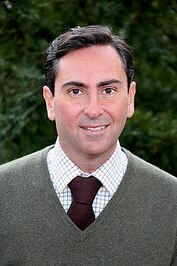Steven G. Mandis
Born
Chicago, Illinois, The United States
Genre
More books by Steven G. Mandis…
“The crucial differentiating advantage of Goldman Sachs would be one that outsiders might find surprising: Its complex variety of many businesses was sure to have lots of conflicts. Goldman Sachs, Blankfein said, should embrace the challenge of those conflicts. Like market risk, the risk of conflicts would keep most competitors away—but by engaging actively with clients, Goldman Sachs would understand these conflicts better and could manage them better. Blankfein (who spends a significant part of his time managing real or perceived conflicts) said, “If major clients—governments, institutional investors, corporations, and wealthy families—believe they can trust our judgment, we can invite them to partner with us and share in their success.”24”
― What Happened to Goldman Sachs: An Insider's Story of Organizational Drift and Its Unintended Consequences
― What Happened to Goldman Sachs: An Insider's Story of Organizational Drift and Its Unintended Consequences
“Goldman’s response to the various pressures in a dynamic environment—in particular, rapid growth—made it even more difficult to notice that the firm was drifting away from its traditional interpretation of its principles. The rapid growth, combined with multiple, conflicting organizational goals, resulted in a series of many small everyday decisions happening so quickly that most people didn’t notice (or were too busy to notice, or didn’t care).”
― What Happened to Goldman Sachs: An Insider's Story of Organizational Drift and Its Unintended Consequences
― What Happened to Goldman Sachs: An Insider's Story of Organizational Drift and Its Unintended Consequences
“1995, the firm revamped its governance structure, forming two new eighteen-person decision-making groups: the partnership committee and the operating committee. The operating committee focused on coordination of strategy and operations among the firm’s departments, divisions, and geographies. The partnership committee oversaw the firm’s capital structure as well as the selection of partners.”
― What Happened to Goldman Sachs: An Insider's Story of Organizational Drift and Its Unintended Consequences
― What Happened to Goldman Sachs: An Insider's Story of Organizational Drift and Its Unintended Consequences
Is this you? Let us know. If not, help out and invite Steven to Goodreads.















